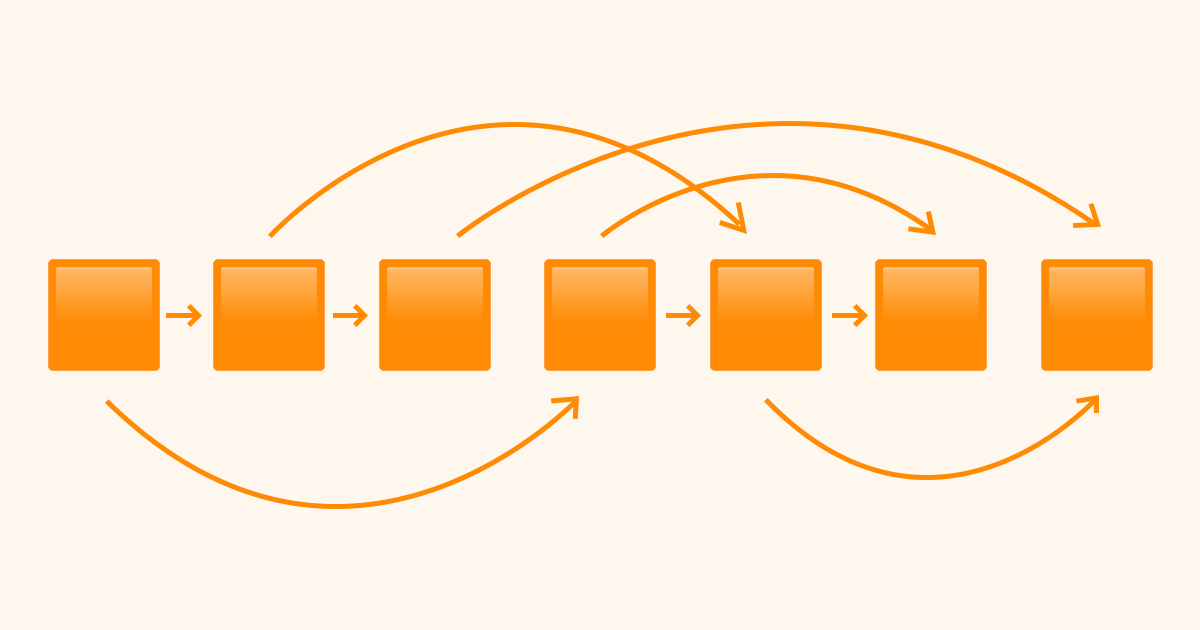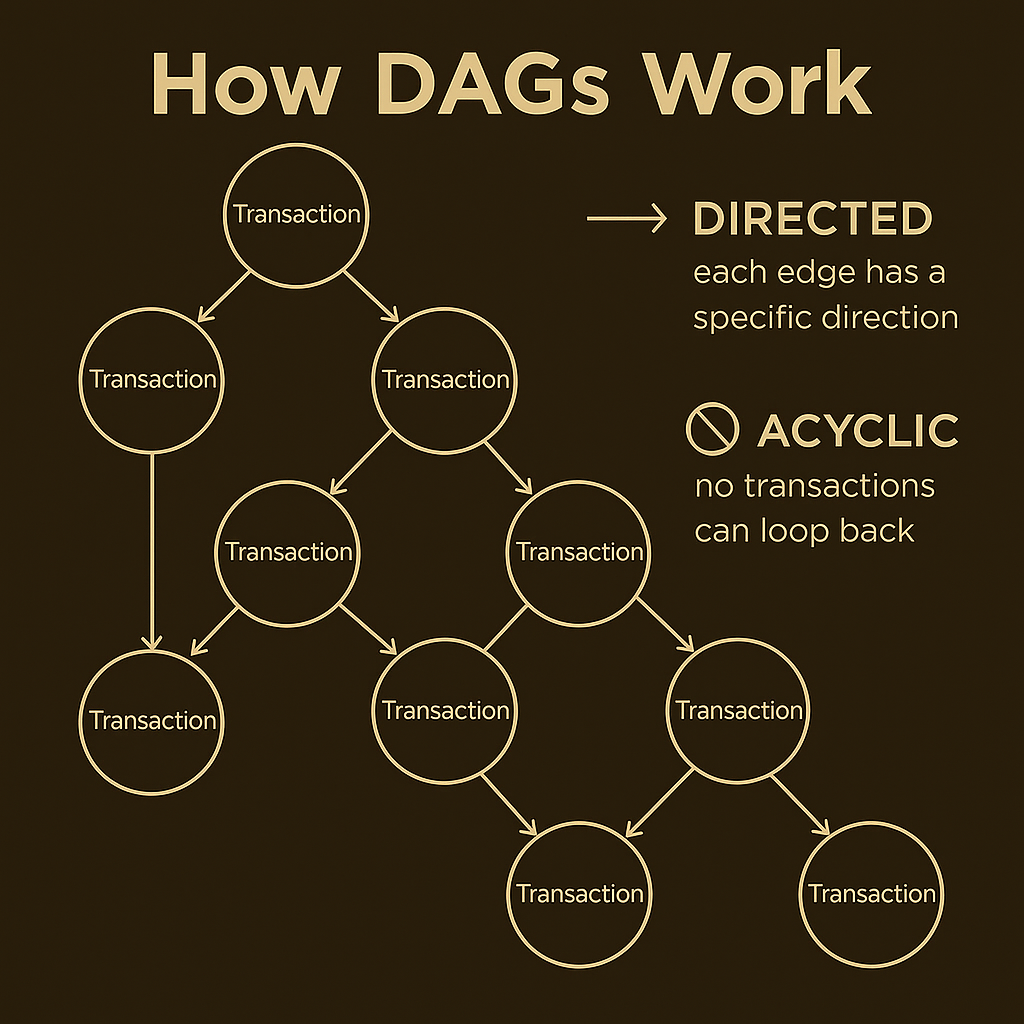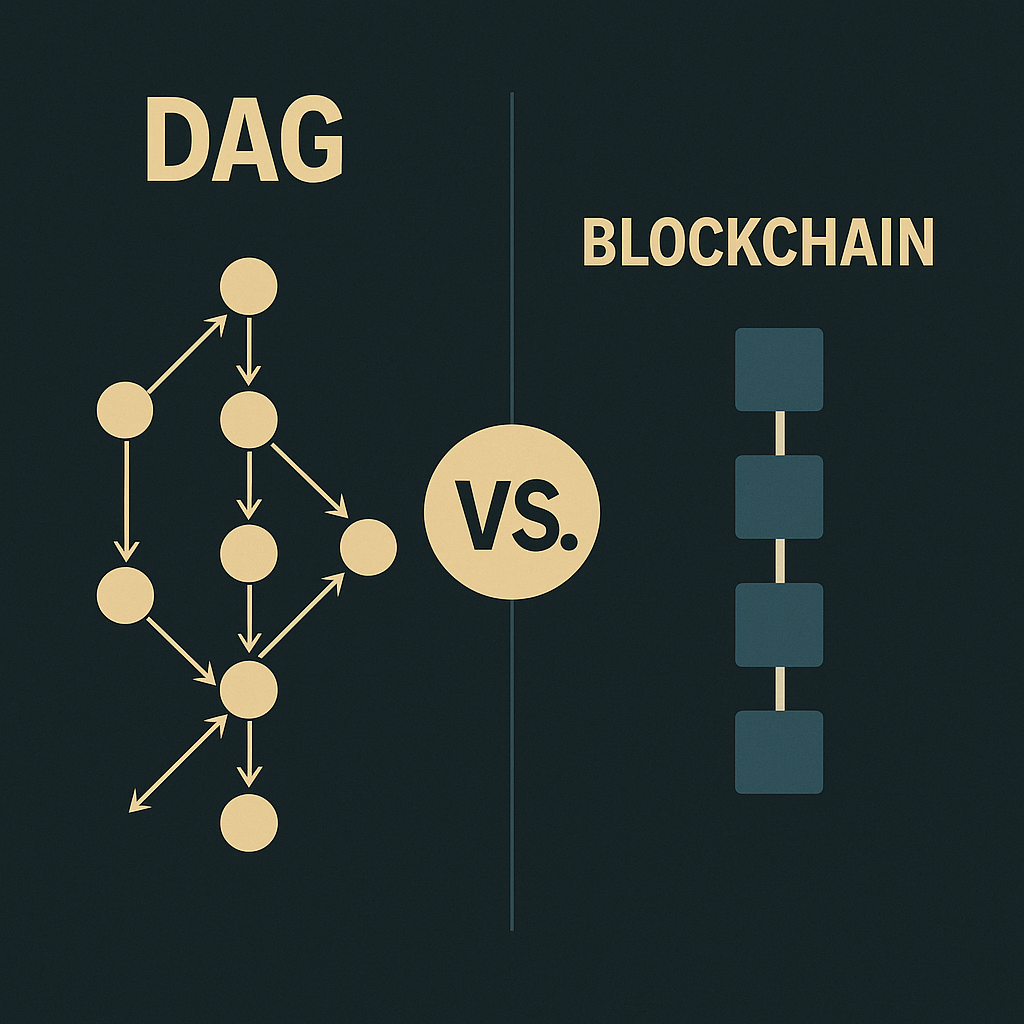
When most people hear the word crypto, they think of blockchain. But there’s another distributed ledger technology that’s being used to run crypto networks: the Directed Acyclic Graph, or DAG.
A Directed Acyclic Graph (DAG) is a way to structure data so that it always moves forward and never loops back. Imagine a tree diagram where each branch represents a new step or event. Instead of using blocks like in a blockchain, DAGs use vertices (or nodes) to represent individual transactions. These vertices are connected by edges, which point from one transaction to the next in a specific direction.
A DAG is called directed because there is always a one-way direction from one transaction to the next, and acyclic because there are no loops or circular paths in the structure.
Just like in blockchains, transactions in DAGs are submitted by nodes. But instead of collecting multiple transactions into a block, each transaction is recorded individually and added on top of previous ones. Since a DAG doesn’t follow a chain, many different transactions can happen at the same time across different parts of the graph.
DAGs are designed to allow simultaneous processing of transactions. Each new transaction has to reference earlier ones to be accepted. This referencing builds a chain of confirmations. When one transaction points to another, it helps validate it. The more confirmations a transaction has, the more secure and accepted it becomes.
Some DAG systems include a small Proof-of-Work (PoW) task. But unlike traditional mining, this task is just enough to prevent spam. It doesn't consume heavy computing power or energy.
Many DAG-based systems use a tip selection algorithm to decide which transactions to build on. If conflicting paths appear, the algorithm will usually favor the transaction with more confirmations and ignore the rest.

Though DAGs and blockchains both serve as distributed ledgers, the way they structure and process transactions is fundamentally different.
A blockchain links transactions together in blocks that form a single, linear chain. Each block must be confirmed by the entire network before the next one can be added.
In contrast, a Directed Acyclic Graph doesn’t use blocks. Instead, it records each transaction individually as a node (or vertex), with links (called edges) connecting it to earlier transactions. This creates a branching, tree-like structure where multiple transactions can be added at the same time. The result is a more flexible system that continues to grow outward, rather than in a single straight line.

The DAG model directly addresses two of blockchain’s biggest limitations: scalability and cost-efficiency. One of the most obvious advantages of DAGs is transaction speed. Since multiple transactions can be processed simultaneously, there is no need to wait for transactions to be batched into a block and confirmed.
Another key benefit is low cost. DAGs eliminate the need for miners, which reduces transaction fees. In terms of security, because validation happens more frequently and in smaller chunks, any issues with a single transaction don’t interrupt the rest of the network, as what can happen in blockchains when an entire block has an issue.
However, there are still drawbacks to consider. Most DAG-based networks aren’t fully decentralized, and some rely on centralized components like trusted validators or corporate governance councils.
Web3 projects like Sui and Hedera Hashgraph are already using DAGs in different ways.
Generally, DAGs can be a great fit for applications that need fast, low-cost, high-volume transaction support. For now, they are mostly being used to bootstrap new networks or support niche applications. But as more developers experiment with it, DAGs could play a much bigger role in how crypto works.
DAGs aren't here to replace blockchain completely, but they offer a promising alternative for specific use cases. As the technology matures and adoption increases, they may become a strong alternative or complement to traditional blockchains.